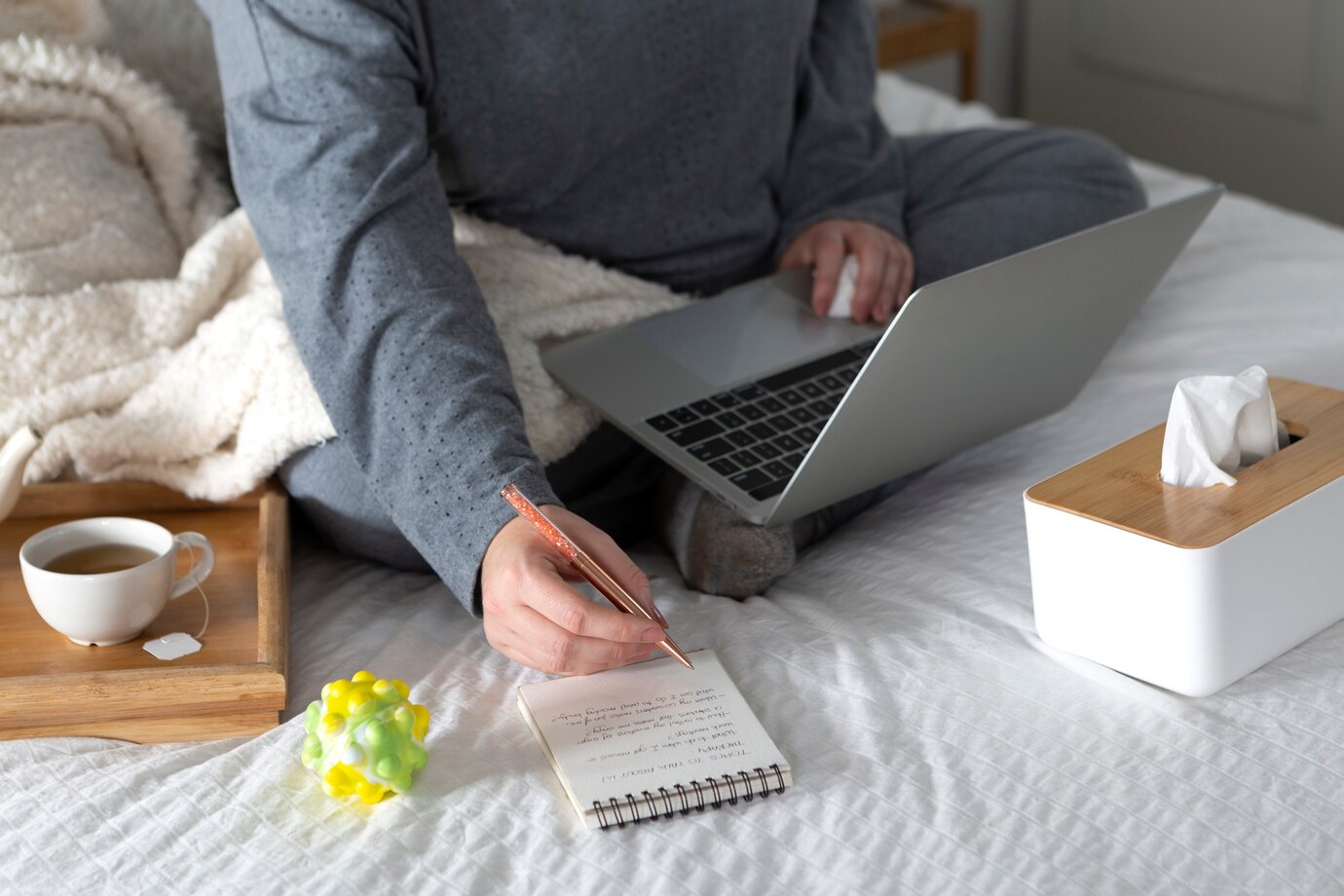
How to Manage Stress in a High-Pressure Work Environment
Stress management techniques are important for productivity and well-being in the corporate world. Corporate stress relief is vital for employees. Tight deadlines, high expectations, and heavy workloads add to stress. Chronic stress can lead to burnout, low performance, and health issues. So, it is important to use effective stress management techniques. Relaxation tips lead to a healthy work environment.
The Impact of Workplace Stress

1. Physical Effects of Stress
- Increased heart rate and blood pressure, leading to cardiovascular risks.
- Muscle tension, headaches, and digestive problems.
- Weakened immune system, making employees more prone to illness.
- Chronic fatigue and difficulty sleeping (insomnia or disrupted sleep cycles).
2. Mental & Emotional Consequences
- Increased anxiety, depression, and mood swings.
- Difficulty concentrating and making decisions.
- Loss of motivation and job satisfaction.
- Reduced creativity and problem-solving abilities.
3. Reduced Productivity & Job Performance
- Chronic stress leads to mental fatigue and decreased focus.
- Higher risk of mistakes and reduced efficiency.
- Increased absenteeism and employee turnover.
- Difficulty maintaining professional relationships due to irritability and frustration.
Effective Stress Management Techniques
1. Prioritise & Organize Tasks
- Use the Eisenhower Matrix to separate urgent and important tasks.
- Break down large projects into smaller, manageable steps.
- Set realistic deadlines and avoid overcommitting.
- Learn to delegate tasks when necessary.
- Use project management tools (Trello, Asana, or Notion) to track progress efficiently.
2. Establish Healthy Work Boundaries
- Limit after-hours work emails and messages.
- Take scheduled breaks throughout the day to reset.
- Communicate workload concerns with managers.
- Set expectations with colleagues about availability outside working hours.
- If possible, utilise flexible work arrangements to balance professional and personal responsibilities.
3. Practise Relaxation Techniques
- Use deep breathing exercises (e.g., 4-7-8 breathing technique) to calm the nervous system.
- Incorporate meditation or mindfulness into your daily routine.
- Try progressive muscle relaxation (PMR) to relieve tension.
- Practice guided imagery techniques, imagining a calm and peaceful place to mentally reset.
4. Maintain a Healthy Work Environment
- Keep your workspace clean and clutter-free to reduce mental overload.
- Personalise your desk with calming elements (plants, soft lighting, inspirational quotes).
- Adjust your workstation ergonomics for comfort and efficiency.
- Use noise-cancelling headphones or background music to minimise distractions.
5. Stay Physically Active
- Stretch periodically to release muscle tension.
- Walk or move around every 60-90 minutes.
- Engage in regular exercise outside of work (yoga, running, or strength training).
- Consider using a standing desk or balance ball chair. This improves posture and circulation.
6. Foster Supportive Workplace Relationships
- Build positive relationships with colleagues to create a supportive environment.
- Seek mentorship and guidance when feeling overwhelmed.
- Engage in team-building activities to strengthen workplace connections.
- Participate in employee wellness programs or peer support groups.
7. Optimise Nutrition & Hydration
- Avoid excessive caffeine and opt for hydrating drinks like herbal tea or water.
- Consume balanced meals with lean proteins, whole grains, and healthy fats.
- Reduce processed foods and refined sugars that contribute to energy crashes.
- Incorporate stress-reducing foods like nuts, leafy greens, and dark chocolate into your diet.
8. Utilise Stress-Relief Resources
- Take advantage of employee wellness programs.
- Use workplace-provided counselling or mental health resources.
- Attend corporate workshops focused on stress management and well-being.
- Schedule regular check-ins with managers or HR to discuss workload concerns.
Creating a Long-Term Stress-Reduction Plan

1. Develop a Morning Routine for a Stress-Free Start
- Wake up at a consistent time to avoid rushing.
- Incorporate mindfulness practices like journaling or meditation.
- Eat a healthy breakfast to fuel your brain and energy levels.
- Plan the day ahead to reduce last-minute stress.
2. Implement Time Management Strategies
- Set daily priorities to stay focused on essential tasks.
- Use the Pomodoro Technique (work in 25-minute blocks with 5-minute breaks).
- Schedule time for deep work (intense focus tasks) and shallow work (routine tasks).
- Avoid multitasking, as it reduces efficiency and increases stress levels.
3. Take Mental Health Breaks
- Step away from your desk and go outside for fresh air.
- Schedule a 5-10 minute relaxation break every few hours.
- Incorporate desk exercises like shoulder rolls, neck stretches, and deep breathing.
- Practice gratitude journaling to shift focus away from workplace stress.
4. Improve Work-Life Balance
- Make time for hobbies, family, and social activities outside of work.
- Set clear boundaries between professional and personal time.
- Avoid bringing work stress home by disconnecting after office hours.
- Schedule vacations or personal days to reset and recharge.
5. Learn to Say No
- Set realistic expectations and avoid overcommitting.
- Politely decline additional responsibilities when your workload is full.
- Focus on your core responsibilities instead of trying to do everything.
- Saying “no” to non-essential tasks helps you say “yes” to meaningful work and personal time.
Signs You Need to Address Workplace Stress
- Feeling overwhelmed, anxious, or constantly fatigued.
- Difficulty sleeping or experiencing frequent headaches.
- Struggling to concentrate or make decisions.
- Lack of motivation and increased work dissatisfaction.
- Increased conflicts with colleagues or family members due to irritability.
- Using alcohol, caffeine, or food as a coping mechanism for stress.
Stress Management for Stressful Environments

High-pressure jobs need strong tools to handle stress. This helps you succeed and keep your mental health in check. People can manage workplace stress and stay productive. They can use stress management techniques, practice relaxation tips, and set clear boundaries. Corporate stress relief strategies should be a part of your daily routine.
A stress-free work life is not about working less but working smarter! Specialising in that, professionals are able to prevent stress by managing their lives. Start doing these tips today to have a healthly productivity.


